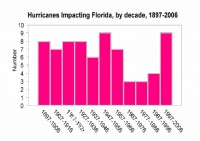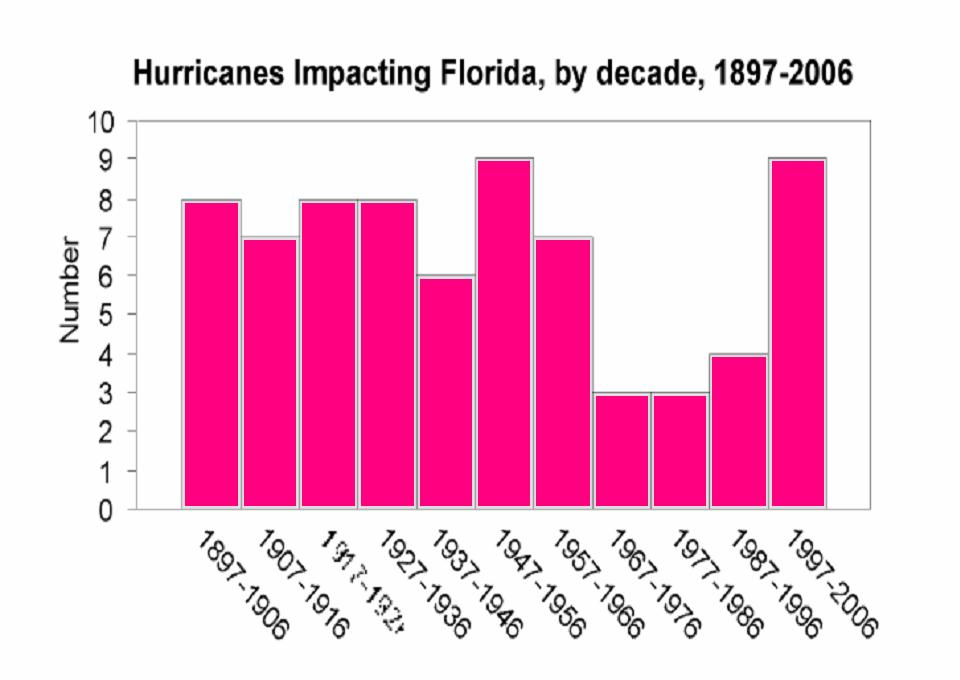By Bob Ferguson, SPPI
Despite the lack of any trends in hurricane landfalls along the U.S. and Florida coasts, or damage to U.S. coastlines when population demographics are taken into account, the impact from a single storm can be enormous. The massive population and infrastructure build-up of the US coastline has vastly raised the potential damage that a storm can inflict. It is stunningly dishonest and irresponsibly dangerous to insinuate, let alone assert, that CO2 mitigation policies could cage the destructiveness of nature, particularly in hurricane-prone Florida.
Far and away the most important determinant in future vulnerability is not changes to climate or hurricanes themselves, but changes to the population and wealth structure of Florida’s coastal communities. The best available scientific evidence suggests that natural variations, on time scales ranging from years to decades, dominate any small impacts that a warming climate may have on the frequency and intensity of Atlantic tropical cyclones. Far and away the most important determinant in future vulnerability is not changes to climate or hurricanes themselves, but changes to the population and wealth structure of Florida’s coastal communities, many of which rank among the fastest growing localities in America, having increased five-fold since the mid-20th century (U.S. Census Bureau, 2006).

Read full detailed analysis here.





